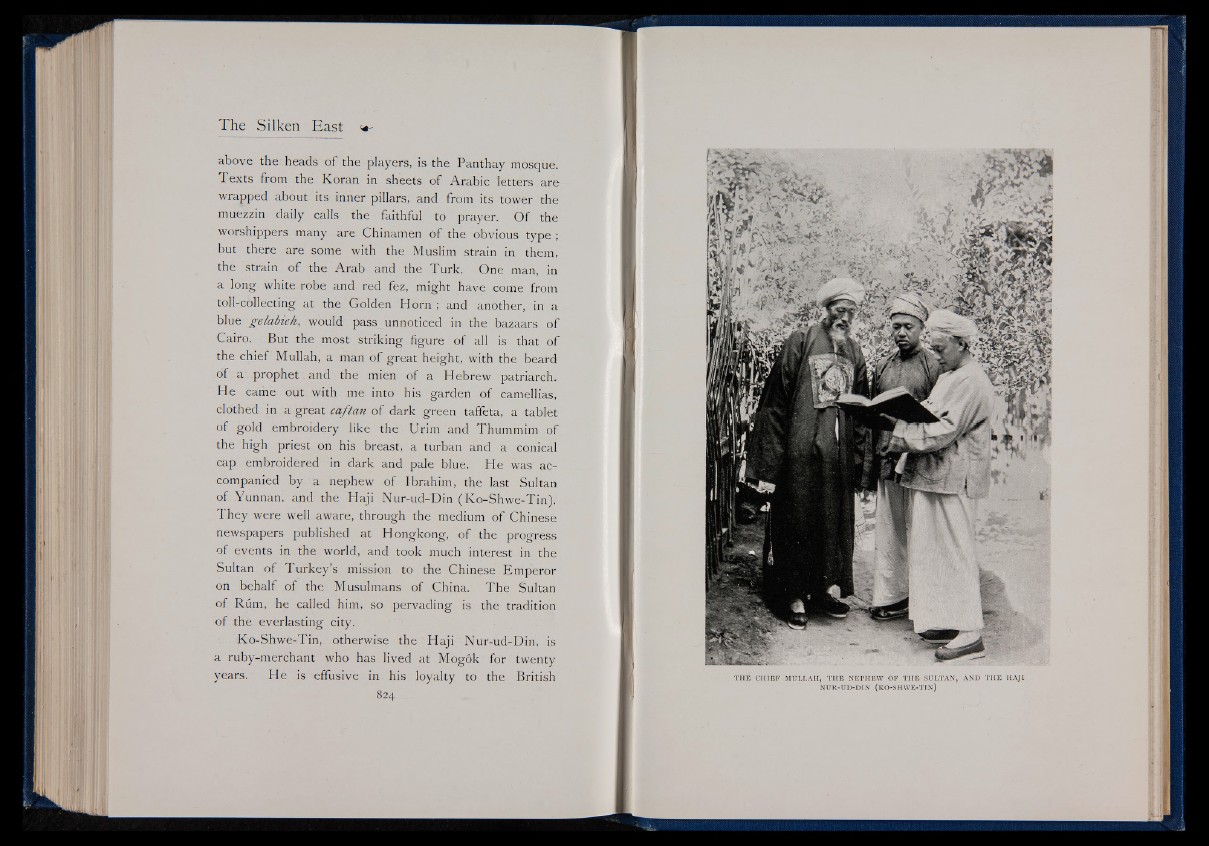
above the heads o f the players, is the Panthay mosque.
Texts from the Koran in sheets of Arabic letters are
wrapped about its inner pillars, and from its tower the
muezzin daily calls the faithful to prayer. Of the
worshippers many are Chinamen of the obvious type ;
but there are some with the Muslim strain in them,
the strain of the Arab and the Turk. One man, in
a long white robe and red fez, might have come from
toll-collecting at the Golden Horn ; and another, in a
blue gelabieh, would pass unnoticed in the bazaars o f
Cairo. But the most striking figure of all is that of
the chief Mullah, a man of great height, with the beard
of a prophet and the mien of a Hebrew patriarch.
He came out with me into his garden of camellias,
clothed in a great caftan of dark green taffeta, a tablet
of gold embroidery like the Urim and Thummim of
the high priest on his breast, a turban and a conical
cap embroidered in dark and pale blue. He was accompanied
by a nephew of Ibrahim, the last Sultan
of Yunnan, and the Haji Nur-ud-Din (Ko-Shwe-Tin).
1 hey were well aware, through the medium o f Chinese
newspapers published at Hongkong, of the progress
of events in the world, and took much interest in the
Sultan of Turkey’s mission to the Chinese Emperor
on behalf of the Musulmans of China. The Sultan
of Rum, he called him, so pervading is the tradition
of the; everlasting city.
Ko-Shwe-Tin, otherwise the Haji Nur-ud-Din, is
a ruby-merchant who has lived at Mogok for twenty
years. He is effusive in his loyalty to the British
824
THE CHIE F MULLAH, TH E NEPHEW OF TH E SULTAN, AND TH E HAJI
NUR-UD-DIN (KO-SHWE-TIN)